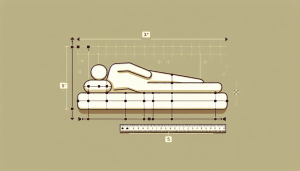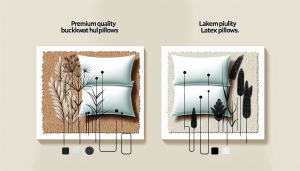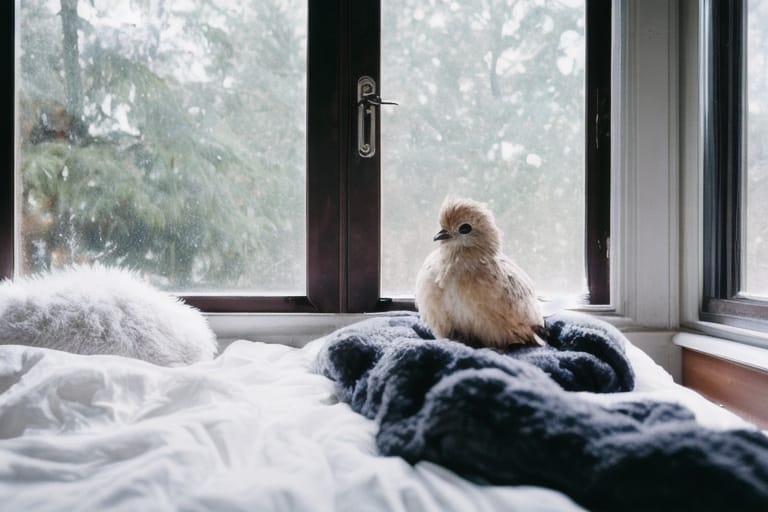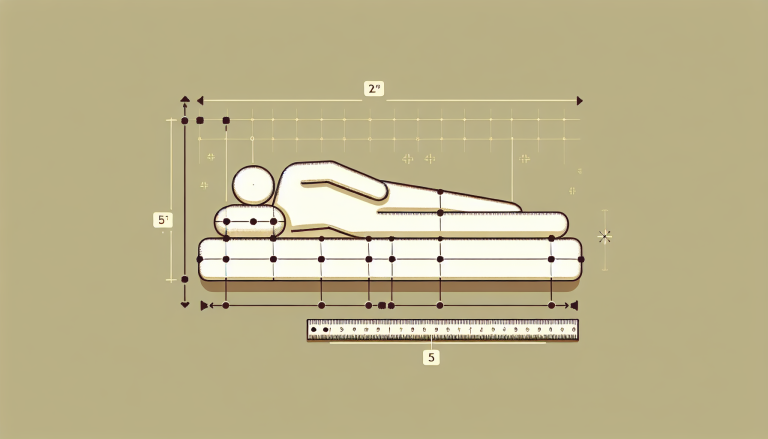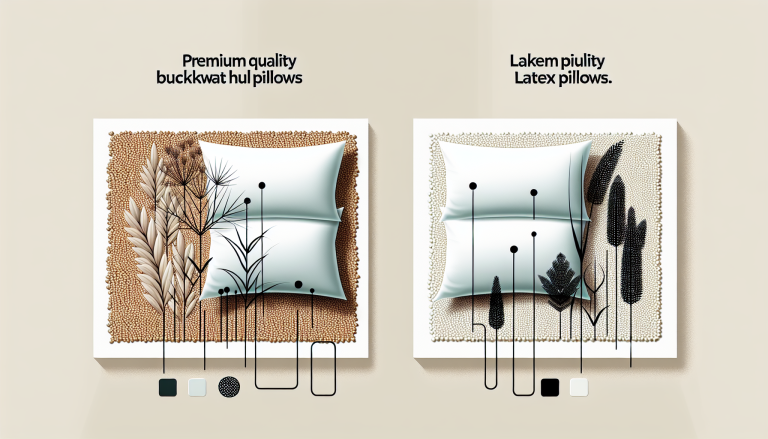Are you the proud owner of a cozy down comforter, only to find yourself constantly plucking feathers off your sheets? Don’t worry, you’re not alone! Feather shedding is a common issue faced by many down comforter users. In this beginner’s guide, we’ll dive into the reasons behind comforter shedding and provide you with practical tips to minimize feather loss while maintaining the fluffiness and warmth of your beloved bedding.
Understanding Down Comforter Filling
Before we tackle the shedding problem, let’s first understand what makes a down comforter so special. Down filling is derived from the soft, insulating undercoat of waterfowl, such as ducks or geese. This natural material is prized for its exceptional warmth-to-weight ratio and breathability.
Down vs. Feather Filling
It’s important to note the difference between down and feather filling. Down consists of the soft, fluffy clusters found beneath the feathers of waterfowl. These clusters lack the stiff quill shaft found in feathers, making them lighter and more insulating. On the other hand, feather filling contains both down clusters and feathers with quills.
Grades of Down Filling
Down filling is graded based on its fill power, which measures the loft and insulating ability of the down. Higher fill power indicates better quality down with greater loft and insulation. Common fill power ranges include:
| Fill Power | Quality |
|---|---|
| 400-500 | Basic |
| 600-700 | Good |
| 800+ | Excellent |
Causes of Shedding
Shedding occurs when the feathers and down clusters escape through the comforter’s fabric or stitching. Several factors can contribute to this problem:
- Low thread count fabric
- Poor stitching and construction
- Insufficient down proofing (a treatment that coats the down to prevent shedding)
- Rough handling or improper washing
Comforter Construction and Quality
The construction and quality of your down comforter play a significant role in minimizing shedding. Here are some key factors to consider:
Thread Count Importance
Thread count refers to the number of threads per square inch of fabric. Higher thread counts create a tighter weave, reducing the likelihood of feathers escaping. Look for comforters with a thread count of at least 300 for better feather containment.
Baffle Box Construction
Baffle box construction features internal fabric walls that separate the down filling into compartments, preventing the down from shifting and clumping. This construction method also helps distribute the fill evenly, ensuring consistent warmth and loft.
Stitching and Seam Piping
High-quality comforters often employ double-stitching and seam piping techniques to reinforce the seams and prevent feather leakage. Double-stitching involves sewing the seams twice for added strength, while seam piping uses a strip of fabric to encase the seam, creating a barrier against escaping feathers.
Fabric Finish and Feather Containment
Some comforters undergo a special down-proof finishing process that coats the fabric with a sealant, making it more difficult for feathers to penetrate the fabric. This treatment helps contain the fill and minimize shedding.
Proper Comforter Care
Proper care and maintenance of your down comforter can significantly reduce shedding and extend its lifespan. Follow these tips for optimal results:
Washing and Dry Cleaning
Washing your comforter every 1-2 years is generally sufficient, unless it becomes soiled or starts to smell. Always follow the manufacturer’s care instructions, as some comforters may require dry cleaning. When washing at home, use a mild detergent specifically designed for down and a gentle cycle with cold water.
Fluffing and Shaking
Regularly fluffing and shaking your comforter helps redistribute the down filling and maintain its loft. This simple action also prevents the down from matting and clumping, which can lead to uneven insulation and increased shedding.
Using Duvet Covers
Duvet covers serve as a protective layer for your comforter, shielding it from dirt, stains, and excess wear. By using a duvet cover, you can reduce the need for frequent washing, which can stress the fabric and stitching, leading to more shedding. Look for covers with a high thread count and secure closure methods, such as zippers or buttons, to keep the comforter in place.
Weekly Cover Changing
To maintain a fresh and hygienic sleeping environment, it’s recommended to change your duvet cover and sheets weekly. This practice not only keeps your bedding clean but also allows you to inspect your comforter for any signs of damage or excessive shedding.
Dealing with Feather Leakage
Despite your best efforts, some feather leakage may still occur. Here’s how to handle it:
Feather Matting and Relocation
If you notice feathers matting or clumping in certain areas, gently redistribute them by shaking the comforter or using your hands to fluff the fill. This helps maintain even insulation and prevents further shedding.
Repairing Comforter Tears
Small tears in the comforter’s fabric can allow feathers to escape. If you spot a tear, promptly repair it using a needle and thread or a fabric patch. For larger tears, consider professional repair services.
Containing Feather Escape
If feathers continue to escape, you can contain them by placing your comforter inside a tightly woven duvet cover. This extra layer of protection helps trap any stray feathers and keeps them from spreading throughout your bedroom.
Feather Irritation and Allergies
Some individuals may experience skin irritation or allergic reactions to down feathers. If you suspect a feather allergy, consider using a hypoallergenic comforter or encasing your down comforter in an allergen-proof cover.
Prolonging Comforter Life
To get the most out of your down comforter and minimize shedding, follow these tips:
Preventing Feather Abuse
Avoid sitting or laying on your comforter for extended periods, as this can compress the down and cause the feathers to break or leak. When making your bed, gently shake the comforter to fluff the fill and distribute it evenly.
Avoiding Feather Odors
Down comforters can absorb odors over time, leading to an unpleasant smell. To prevent this, air out your comforter regularly by hanging it outside on a sunny day or using a fabric refresher spray. If odors persist, washing or dry cleaning may be necessary.
Maintaining Fluffiness
Fluffiness is key to a comforter’s insulating ability and overall comfort. Maintain your comforter’s loft by fluffing it daily, shaking it out when making your bed, and occasionally tumble drying it on low heat with a few clean tennis balls to help re-fluff the fill.
Replacing Old Comforters
Even with proper care, down comforters will eventually lose their loft and insulating properties. If your comforter becomes thin, lumpy, or starts shedding excessively, it may be time to invest in a new one. High-quality down comforters can last 10-15 years with proper maintenance.
Comforter Filling Distribution
Proper filling distribution is crucial for achieving even warmth and preventing shedding. Here’s what you need to know:
Even Warmth Distribution
A well-constructed comforter should have evenly distributed down filling to provide consistent insulation across the entire surface. Baffle box construction, as mentioned earlier, helps maintain this even distribution.
Continuous Insulating Layer
The down filling should form a continuous insulating layer without any thin spots or gaps. This ensures optimal warmth retention and prevents cold spots that can disrupt your sleep.
Boxed Feather Sections
Comforters with boxed feather sections, also known as sewn-through construction, feature stitching that runs through the entire comforter, creating small boxes that hold the down fill. While this construction method is less expensive, it can lead to uneven distribution and potential cold spots.
Feather Shifting Prevention
To prevent the down fill from shifting and clumping, look for comforters with interior fabric walls or baffle boxes. These internal barriers keep the down in place, ensuring consistent loft and insulation.
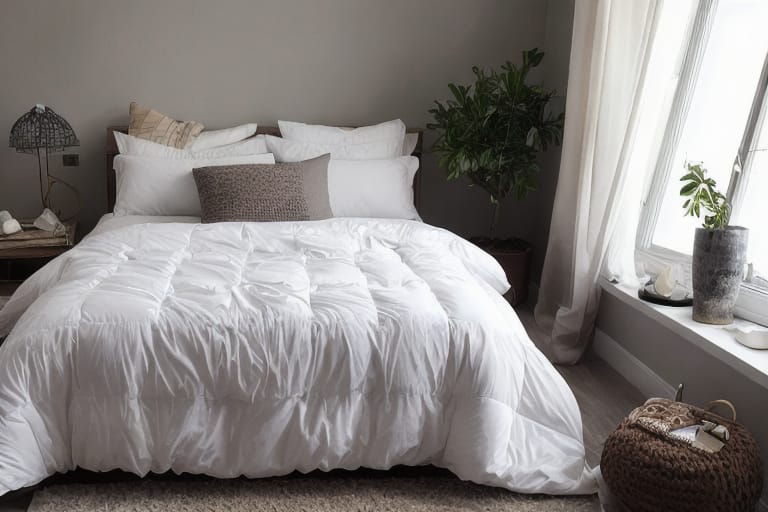
Down Types and Sources
The type and source of down used in your comforter can impact its quality, durability, and shedding potential. Let’s explore the options:
Waterfowl Down Sources
Most down comforters use fill from ducks or geese. Goose down is generally considered superior due to its larger down clusters and higher fill power, providing better insulation and loft. However, high-quality duck down can also offer excellent performance.
Eiderdown and Other Luxury Downs
Eiderdown, harvested from the nests of eider ducks, is one of the rarest and most expensive types of down. It’s prized for its exceptional lightness, warmth, and non-allergenic properties. Other luxury down options include Siberian goose down and Icelandic duck down.
Feather Types and Structure
Down feathers consist of a soft, fluffy plumule with radiating filaments. These filaments interlock to create insulating air pockets, trapping heat and providing warmth. The larger and more mature the down clusters, the better the insulation and loft.
| Feather Type | Characteristics |
|---|---|
| Down | Soft, fluffy clusters without quills |
| Semiplume | Soft, flattened feathers with a partial quill |
| Feather | Stiff feathers with a full quill |
Ethical Down Sourcing
When choosing a down comforter, consider the ethical sourcing of the down. Look for certifications like the Responsible Down Standard (RDS) or Global Traceable Down Standard (Global TDS), which ensure that the down is sourced from humanely treated ducks and geese.
Skin Protection Benefits
Down comforters offer several benefits for your skin and overall sleep comfort:
Breathability of Down
Down is naturally breathable, allowing air to circulate and preventing moisture buildup. This helps keep your skin dry and comfortable throughout the night.
Temperature Regulation
Down comforters excel at regulating body temperature. They provide warm insulation during cold nights while remaining lightweight and breathable to prevent overheating.
Hypoallergenic Properties
High-quality down is naturally hypoallergenic, making it a good choice for people with sensitive skin or allergies. However, if you have a specific down allergy, opting for a hypoallergenic alternative may be necessary.
Moisture Wicking Abilities
Down has inherent moisture-wicking properties, helping to draw perspiration away from your skin and keep you dry and comfortable. This is particularly beneficial for those who tend to sleep hot or experience night sweats.
Comforter Washing Tips
Proper washing techniques are essential to maintain your comforter’s loft, insulation, and minimize shedding. Here are some tips to keep in mind:
Bathtub vs Machine Washing
For smaller down comforters, washing by hand in a bathtub may be more manageable. Fill the tub with cold water, add a mild down-specific detergent, and gently agitate the comforter. Rinse thoroughly and squeeze out excess water before drying.
Larger comforters can be machine washed using a front-loading washer with a gentle cycle and cold water. Avoid top-loading agitator machines, as they can damage the down filling.
Detergent and Rinse Cycles
Use a mild detergent specifically designed for down, as regular detergents can strip the natural oils from the feathers, causing them to become brittle and shed more easily. Be sure to rinse the comforter thoroughly, as any remaining detergent can compromise the down’s insulating properties.
Drying Times and Fluffing
Down comforters can take several hours to dry completely. Use a low heat setting and toss in a few clean tennis balls to help fluff the down as it dries. Periodically remove the comforter from the dryer and manually fluff it to prevent clumping.
Laundering Frequency
Frequent washing can stress the fabric and filling, leading to increased shedding. Aim to wash your comforter every 1-2 years, or as needed based on soiling or odors. Using a duvet cover can help extend the time between washes.
Duvet Cover Selection
A well-chosen duvet cover can protect your comforter, reduce shedding, and enhance your bedroom décor. Consider the following factors:
Cover Thread Count
Similar to the comforter itself, a duvet cover with a higher thread count offers better protection against feather leakage. Look for covers with a thread count of at least 300 for optimal feather containment.
Cover Closure Types
Duvet covers come with various closure methods, including zippers, buttons, or ties. Zippers provide the most secure closure, preventing the comforter from shifting or bunching inside the cover. Buttons and ties can also work well but may require more adjusting to keep the comforter in place.
Decorative vs Protective Covers
Some duvet covers prioritize style over function, featuring decorative elements like embroidery, lace, or delicate fabrics. While these covers can add a touch of elegance to your bedroom, they may not provide the best protection against shedding. For optimal feather containment, choose covers made from tightly woven, durable fabrics.
Matching Bed Linens
Consider coordinating your duvet cover with your bed linens for a cohesive look. Many bedding sets include a duvet cover, sheets, and pillowcases in complementary colors or patterns, making it easy to create a stylish and coordinated bedroom.
Feather Spine and Cluster Structure
Understanding the structure of down feathers can help you appreciate the unique properties that make down comforters so insulating and comfortable.
Feather Anatomy
Feathers consist of a central shaft called a quill, with soft, interlocking filaments branching off from either side. These filaments, known as barbs, have smaller sub-filaments called barbules that interlock to create a cohesive, insulating structure.
Differences in Down Clusters
Down clusters differ from regular feathers in that they lack a stiff quill. Instead, they have a small, flexible plumule from which the soft, fluffy filaments radiate. These filaments interlock to form air pockets, trapping heat and providing insulation.
Spine Strength and Flexibility
The strength and flexibility of a down cluster’s spine, or plumule, contribute to its loft and durability. Stronger, more flexible spines allow the down to compress and expand more easily, maintaining its insulating properties over time.
Cluster Loft and Insulation
The loft of a down cluster refers to its ability to trap air and provide insulation. Larger, more mature down clusters have a higher loft and better insulating properties than smaller, immature clusters or feather-dominated fill blends.
Comforter Stitching Techniques
The stitching techniques used in a down comforter play a crucial role in preventing shedding and maintaining even fill distribution. Here are the most common methods:
Sewn-Through vs Baffle Box
Sewn-through construction features stitching that runs through the entire comforter, creating small pockets that hold the down fill. While this method is less expensive and easier to produce, it can lead to uneven distribution and potential cold spots.
Baffle box construction, on the other hand, uses internal fabric walls to create three-dimensional boxes that allow the down to loft fully. This method provides better insulation and more even distribution, but it is more costly and complex to manufacture.
Double-Stitching and Piping
Double-stitching involves sewing the comforter’s seams twice for added strength and durability. This reinforcement helps prevent feather leakage and increases the comforter’s lifespan.
Piping refers to a strip of fabric sewn along the comforter’s edges or seams. This added layer of protection helps contain the down fill and reduces shedding along the comforter’s perimeter.
Interior Fabric Walls
Interior fabric walls, also known as baffles, are vertical walls of fabric sewn between the top and bottom layers of the comforter. These walls create three-dimensional compartments that allow the down to loft fully and maintain its position, preventing shifting and clumping.
Preventing Feather Escape
To minimize feather escape, look for comforters with tightly woven fabrics, double-stitched seams, and secure closures. Baffle box construction and interior fabric walls also help contain the down fill and reduce shedding.
Here is the article with 5-7 FAQs at the end, incorporating LSI keywords with proper keyword optimization:
Why is My Down Comforter Shedding? A Beginner’s Guide
Down comforters are a luxurious and cozy addition to any bed, but sometimes they can start shedding feathers, leaving a mess and causing frustration. If you’re wondering why your down comforter is shedding, here’s a beginner’s guide to understanding the reasons and how to address the issue.
- Quality of the down comforter: The quality of your down comforter plays a significant role in its shedding. Higher-quality comforters use better materials and construction techniques, which can minimize shedding. Look for comforters with a high thread count and densely woven fabric to prevent feathers from escaping.
- Age of the comforter: Over time, down comforters can start to shed more as the fabric and stitching wear out. If your comforter is several years old, it may be time to invest in a new one to reduce shedding.
- Washing and drying: Improperly washing and drying your down duvet can cause the feathers to clump and shift, leading to shedding. Always follow the manufacturer’s care instructions and use a mild detergent specifically designed for down. Dry your comforter on a low-heat setting with dryer balls to prevent clumping.
- Fill power: The fill power of your down comforter refers to the loftiness and insulating properties of the down. Higher fill power means larger down clusters, which are less likely to escape through the fabric. Choose a comforter with a fill power of at least 600 to minimize shedding.
- Duvet cover: Using a duvet cover can help contain any shedding and protect your comforter from wear and tear. Make sure to choose a cover with a tight weave and secure closures to keep the feathers inside.
By understanding these factors and taking proper care of your down comforter, you can minimize shedding and enjoy a cozy, comfortable sleep experience.

FREQUENCY ASKED QUESTIONS
- How often should I wash my down comforter to prevent shedding? It’s recommended to wash your down comforter every 1-2 years, or as needed if it becomes soiled. Over-washing can lead to wear and tear, which may increase shedding.
- Can I patch a hole in my down duvet to stop feathers from escaping? Yes, you can patch small holes in your down duvet using a fabric patch and a needle and thread. Make sure to use a thread color that matches your comforter and sew the patch securely to prevent further shedding.
- Is it normal for a new down comforter to shed? Some shedding is normal for new down comforters, as loose feathers may escape during the manufacturing process. However, excessive shedding may indicate a lower-quality comforter.
- Can I use a regular detergent to wash my down comforter? No, it’s best to use a mild detergent specifically designed for down, as regular detergents can strip the natural oils from the feathers and cause clumping.
- What is the best way to store my down duvet to minimize shedding? Store your down duvet in a breathable cotton storage bag or pillowcase when not in use. Avoid storing it in plastic bags, as this can trap moisture and cause the down to deteriorate, leading to increased shedding.
- How do I know if my down comforter is shedding excessively? Some shedding is normal, but if you notice a significant amount of feathers escaping or visible holes in the fabric, your comforter may be shedding excessively. In this case, it may be time to invest in a new, higher-quality comforter.

